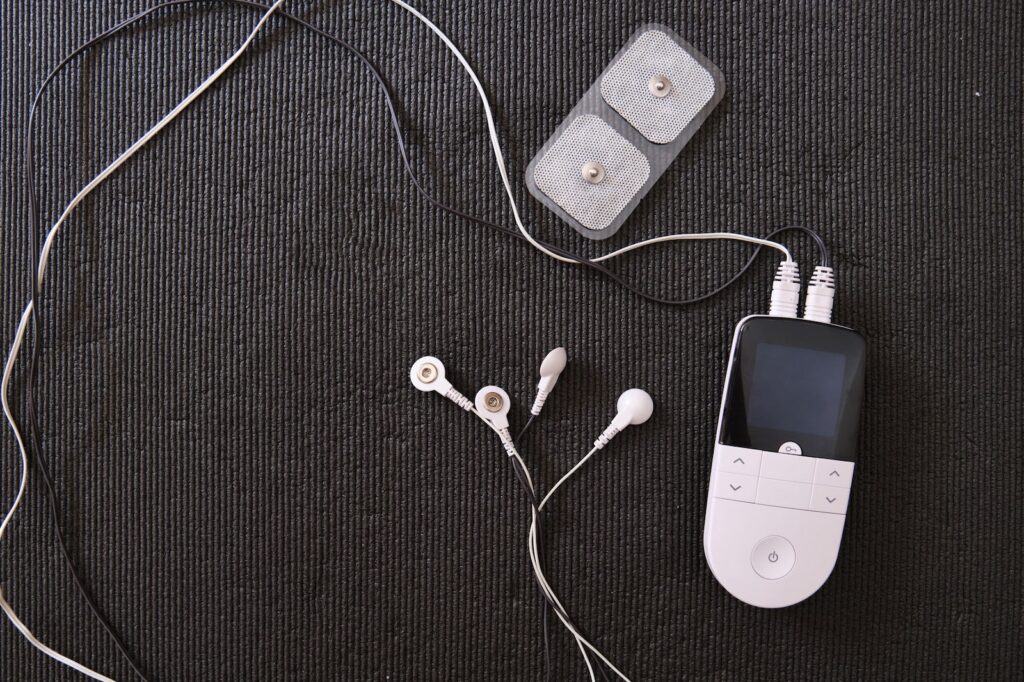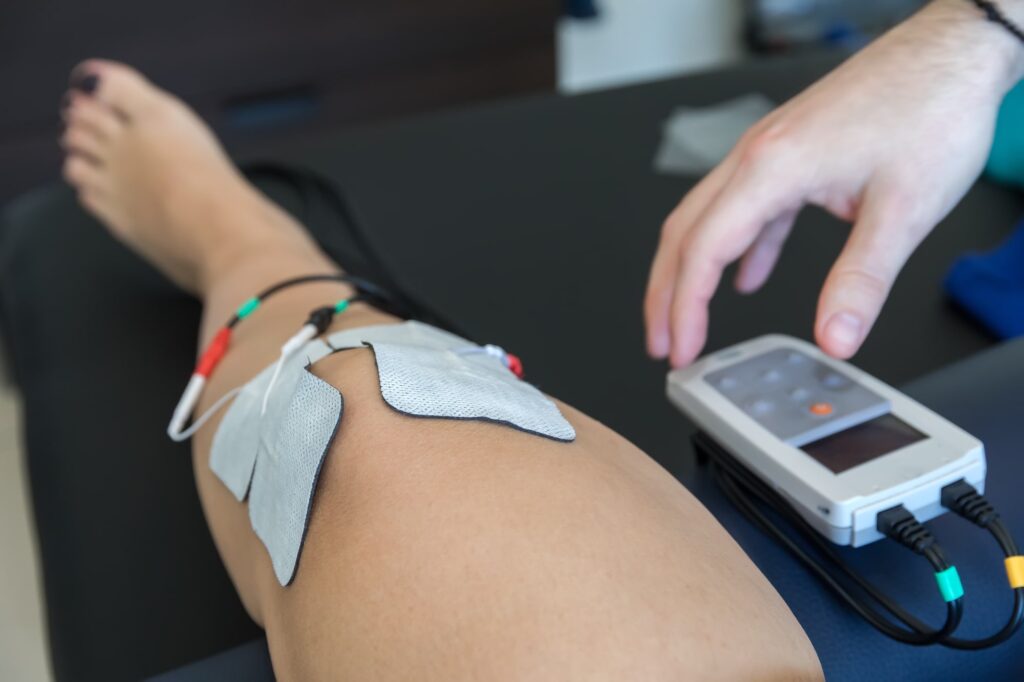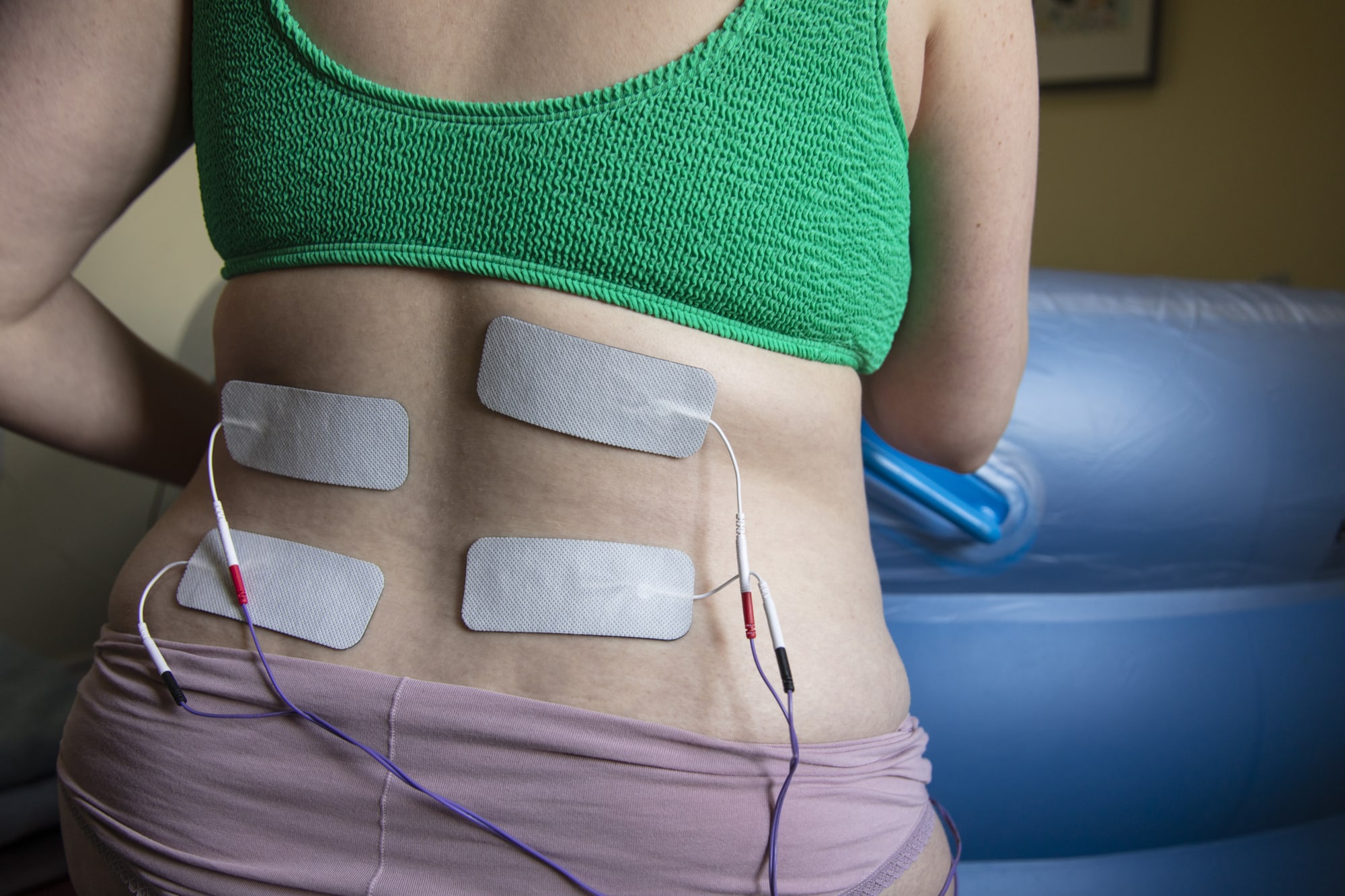Chronic low back pain is a prevalent issue among the elderly, affecting approximately 1.5 million out of 50 million Medicare enrollees in the United States.
It is considered the second most disabling condition for people aged 65 and older, following arthritis. This blog post delves into the potential benefits of using a TENS (Transcutaneous Electrical Nerve Stimulation) unit as a treatment option for chronic low back pain and facet joint pain in this population.
What is TENS?

TENS is a non-invasive, drug-free method of pain relief that involves the use of a small, portable device to deliver electrical impulses to the skin’s surface.
The device consists of a handset, which powers the electrical stimulation, a wire or lead, and electrodes that adhere to the skin. The basic unit features one channel, but some devices offer two channels, allowing for the use of two sets of electrodes.
Effectiveness of TENS for Pain Relief
TENS has been proven to be effective in treating acute pain, which is sudden and short-lived, as well as post-operative pain. However, the effectiveness of TENS in treating chronic pain is less clear, with research showing mixed results.
Anecdotally, some individuals with chronic pain have found relief using TENS, but further research is needed to confirm its effectiveness for this purpose.
| Physiology of Tens for Pain | Technical Details |
|---|---|
| Transcutaneous electrical nerve stimulation (TENS) is a therapy used to relieve chronic and acute pain. | TENS works by sending electrical impulses to specific nerve pathways, which blocks the transmission of pain signals to the brain. |
| TENS units are composed of four main components: a power source, a pulse generator, electrodes, and cables. | The power source is a 9-volt battery or an AC adapter; the pulse generator produces the electrical impulses; the electrodes attach to the skin and conduct the electrical current; and the cables connect the electrodes to the power source. |
| TENS is used to help manage pain from a wide variety of conditions, such as back pain, fibromyalgia, and arthritis. | The electrical impulses produced by the TENS unit are usually felt as a tingling sensation on the skin. The electrical impulses cause the muscles to contract, which can help to reduce pain and improve range of motion. |
| The electrical current produced by the TENS unit can be adjusted to provide different levels of stimulation. | The amplitude (strength of the electrical current) can be adjusted to provide more or less stimulation, and the pulse width (duration of the electrical current) can also be adjusted to provide different levels of stimulation. |
A Recent Study on TENS Units and Chronic Low Back Pain
A study presented at the American Academy of Orthopedic Surgeons meeting in New Orleans focused on treating chronic low back pain in individuals aged 65 and older. The study, conducted by Michael Min Shaw, a Masters of Public Health, compared two statistically matched groups of elderly participants with low back pain: those treated with a TENS unit and those who were not.
The results showed that the group using TENS units had fewer clinic visits, hospitalizations, diagnostic studies, and surgeries. They also reported less back pain overall. It is worth mentioning that Michael Min Shaw is an employee of Don Joy Global, a company that sells orthopedic appliances, including TENS units.
Understanding TENS Units

TENS stands for Transcutaneous Electrical Nerve Stimulation. These devices use a small electrical current, powered by batteries, to send electrical pulses to electrodes placed on the skin. TENS units can modulate the electrical pulse’s bandwidth, frequency, and intensity.
The concept behind TENS units is similar to the natural response of rubbing a sore knee after hitting it against a table or wall. This action provides light stimulation to nerve fibers, which can block deeper pain fiber sensations. Similarly, TENS units deliver mild electrical stimulation to superficial nerves, which can help diminish or lower the activation of deeper, more painful nerves.
Additionally, TENS has been shown to stimulate the release of natural pain-relieving chemicals, such as endorphins. This can provide extended pain relief even after the device has been turned off, sometimes lasting for an additional hour or two.
TENS vs. Opioids
TENS units offer several advantages over opioid pain relievers, including lower cost, less invasiveness, and fewer side effects. The primary side effect of TENS is skin irritation under the electrodes, which can be managed with hypoallergenic pads. In comparison, opioids carry risks of addiction, overdose, and a range of other side effects.
Previous Research on TENS Units
Past studies on TENS units have shown mixed results. Some studies demonstrated benefits, while others, often of higher quality, revealed poor quality studies and inconclusive evidence on TENS units’ effectiveness.
TENS has no known side effects and can be used by most individuals. However, those with implanted electrical devices, such as pacemakers, brain stimulators, or spinal cord stimulators, and people with epilepsy should avoid TENS, especially near the neck or head. TENS should also not be applied to areas with wounds or infections.
Choosing a TENS Unit
With hundreds of TENS units available on the market, it can be challenging to decide which one to choose. When selecting a TENS unit, it is essential to consider factors such as FDA clearance, medical-grade quality, power, and ease of use. Comprehensive instructions and quick-start guides can also help ensure proper use and optimal results.
Using a TENS Machine for Facet Joint Pain
TENS machines are typically small, portable devices with rechargeable batteries. They provide various frequencies and wave shapes, allowing users to select the most effective settings for their pain. Two types of TENS current are available: high frequency (conventional) and low frequency (acupuncture-like).
- High-frequency TENS (around 100 Hz) provides immediate pain relief but lasts only as long as the machine is turned on. This mode works by blocking pain signals through the gate control theory.
- Low-frequency TENS (around 2 Hz) resembles acupuncture, with a slightly uncomfortable sensation like needles entering the skin. This mode activates brain areas similar to acupuncture, producing endorphins for long-lasting pain relief, sometimes for several days after the machine is turned off.
Applying TENS Pads
TENS machines come with pads that attach to the skin to deliver the electrical current. To use the machine, connect the pads to the appropriate channels and place them around the painful area.
The current will flow between the pads, providing pain relief. Adjust the intensity of the current as needed, ensuring that it remains comfortable and does not cause muscle contractions.
Correct Pad Placement:
- One-sided pain (using one channel): If the pain is localized in a specific area, start by placing one pad directly over the painful spot. Then, position the second pad about one to two inches away, either above, below, or to the side of the first pad. Make sure the pads are not touching and are at least one pad width apart.
- Surrounding the pain (using one channel): Place the pads on both sides of the painful area, crossing over the pain. This may provide broader pain relief. Keep in mind that the pads should not be placed directly on the bony spine but instead on the soft tissue surrounding it.
- Two-sided pain (using two channels): If the pain covers a larger area, use both channels and all four pads. Place two pads on each side of the pain, crossing the channels (i.e., Channel 1 pad to Channel 1 pad, and Channel 2 pad to Channel 2 pad). This crisscross pattern can help cover a larger area for pain management.
- Central pain (using two channels): For central pain, place one pad on each side of the spine, crossing the channels as described in the two-sided pain setup. This approach can help target a more central but larger area of pain.
Remember to clean the skin with soap and water before applying the pads, and shave any hairy areas to ensure good conduction and prolong the life of the pads.
Complementary Exercises:
In addition to using a TENS unit, there are exercises that can help alleviate low back pain due to facet joint arthritis.
- Trunk Extensions: Trunk extensions help counteract the forward bending stress that the back experiences throughout the day. To perform trunk extensions, lay flat on your stomach with your hands under your shoulders. Press up, starting with mini press-ups and eventually working toward full press-ups, without lifting your pelvis off the ground. If this exercise causes pain or discomfort, stop immediately.
- Trunk Rotations (Windshield Wipers): This gentle exercise can help loosen up the back. Lie down in the hook-lying position, with your feet flat on the ground and your knees bent. Keeping your knees together, gently rotate them from side to side like windshield wipers. If one direction causes pain, avoid it and focus on the other side.
Both of these exercises can be performed multiple times a day to keep the back moving and help reduce pain.
Conclusion: Should You Try a TENS Unit?
Given the inconclusive nature of previous studies and the potential benefits demonstrated in the recent study, individuals suffering from chronic low back pain that does not require surgery may consider trying a TENS unit.
The only risk involved is the financial investment in the device. If a TENS unit can effectively alleviate pain, it may be worth considering as a non-invasive treatment option for chronic low back pain in the elderly population.
If you have any further questions or concerns, please feel free to contact our office. We would be delighted to answer any questions you might have and provide additional information on this topic.

Physiatrist, M.D. Pain Center of University of São Paulo

